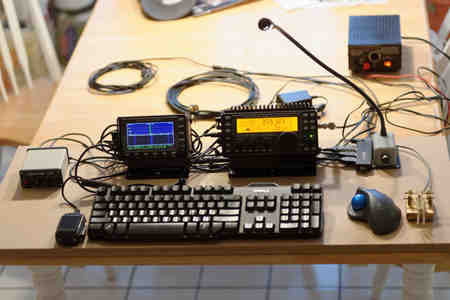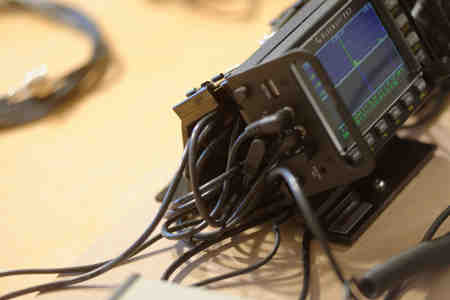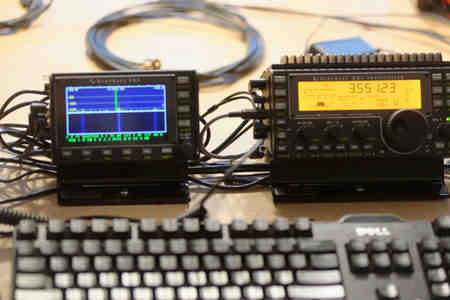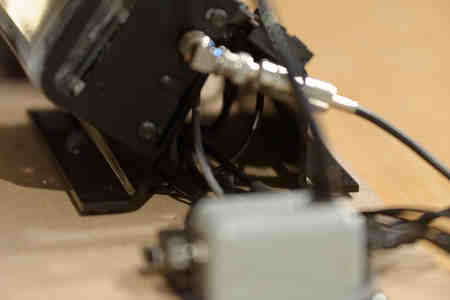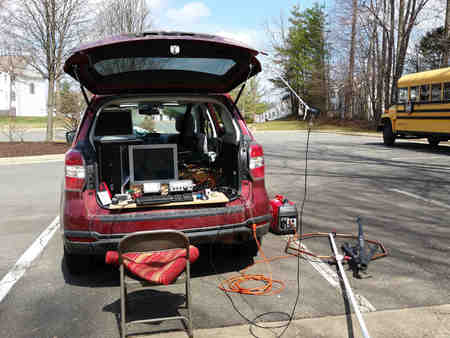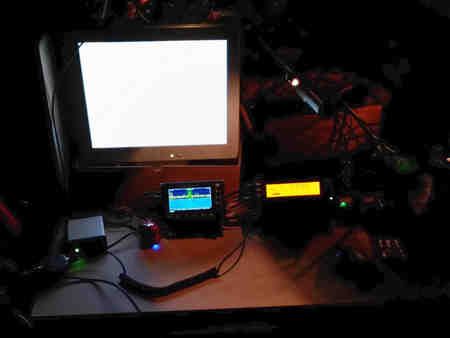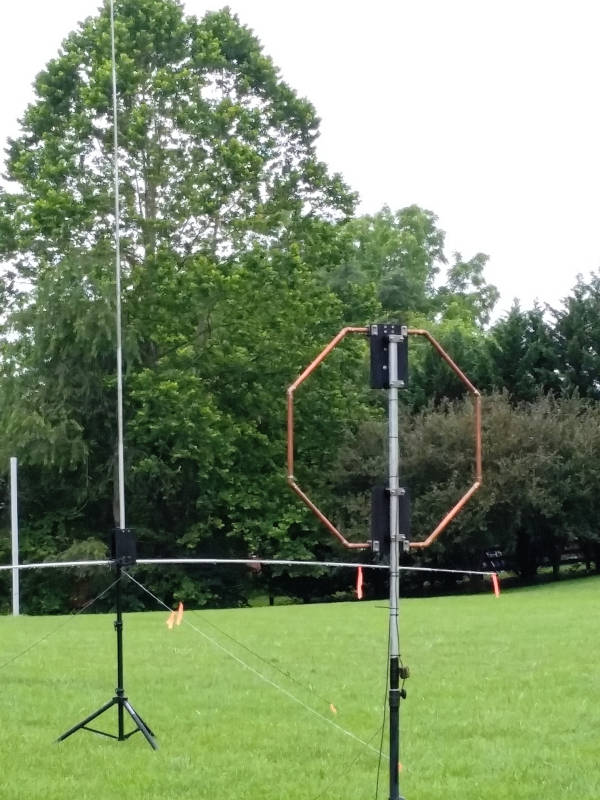Virginia QSO Party 2015
It’s been several years since my last foray into portable operation for the Virginia QSO Party. During this event, I’ve been fixed-single-operator, fixed-multi-multi, mobile, expedition and one year I ran fixed, expedition and mobile (never again!!). This year I decided to try HF portable as a VQP expedition station using my Elecraft QRP gear.
Elecraft KX3 and PX3 on a breadboard
I’ve had my KX3 for a while and recently added a PX3 to help locate VQP action in the bands. My plan was to operate out of the back of my vehicle. One thing I knew I did not want is equipment sliding around during and between operating times. I decided to secure everything I could to a sturdy substrate. I found an MDF panel laying around and put it into service holding the gear. Figure 1 shows the result…
I surveyed many ways to secure the Elecraft KX3 and PX3, but in the end purchased a couple of plastic stands from Nifty Accessories. The very first thing I did upon receipt of these stands was drill a couple holes, one in each foot, to provide a way to hold them to my board.
USB Hub helps tidy PC connections
Readers of this site may recall I hold in high regard my Navigator radio interface from US Interface. My number one favorite feature of the Navigator is the bundling of all the various control ports and Winkey system into just one convenient USB cable to the PC. My hope was to attain a similar level of tidiness with this breadboard approach.
There are five devices requiring computer connection: Elecraft KX3, Elecraft PX3, Sigtronix Audio interface, keyboard and mouse. The Elecraft products are unified by their design to need just one USB cable so the resulting number of USB ports reduces to four.
I choose a trackball for my mouse device and it includes the wireless USB transceiver. This along with the three USB cables tie to a USB four port aggregator. This has one USB cable to the PC and one power cable. This is not as slick as the Navigator, but is much better than trying to stuff all these USB cables into a PC.
The one thing missing from this setup is an external keyer. I found I could setup N1MM’s macros to use the KX3’s internal keyer using KY codes sent through the CAT interface alleviating the need for one more box. The result is not quite as elegant as a good external keyer, but fully functional enough for routine contest messaging. If you would like to know more about using the KY codes, stay tuned for an article on this site, but for now here is one of the references that helped provide the first clues…
Lighting
I had an old goose-neck AC powered light from my band’s old mixing board. I re-purposed it for this project. An LED light would be far more appropriate, but this is what was on hand. It works and the rheostat knob allows for just the right amount of light.
DC Power
Since I planned for an AC generator, I simply wired both the PX3 and KX3 to the power posts of a small linear power supply. This begs for some better wire management, but the time was short.
Radio stands make cable tray
An unforeseen benefit of using the Nifty Accessories stands is the tunnel they provide. I stuffed just about every cable I could into here and, while not pretty, was pleased with the cables not constantly getting in the way. Figures 2, 3 and 4 show the left, mid and right views of the cable mess.
Elecraft Expedition
Finally here is the portable operation in action…
A generator for a QRP operation may seem a bit overkill, but this allowed me to use a regular PC for logging operations. However, while the PC did power on, it wouldn’t even post! Murphy strikes! Thankfully I had an old spare laptop with a bad battery I plugged into the UPS to save the day.
Here is a nighttime shot in another county…
I made about 80 QSOs from MPX using QRP power. I found SSB the most difficult… not a surprise right? CW was remarkable functional. I did plan on many digital QSOs, but the laptop did not have the right drivers loaded so after losing the regular PC, I had to abandon digital entirely. 🙁
Conclusion
I was modestly successful giving out a rare multiplier to other participants in the Virginia QSO Party. At the end of the day #1 I decided to do something different for day #2 and assisted a multi-multi who was asking for some help filling some chairs.
The breadboard approach worked well as a pull-it-out radio system ready to go. I’m not convinced this is a keeper approach, however.
